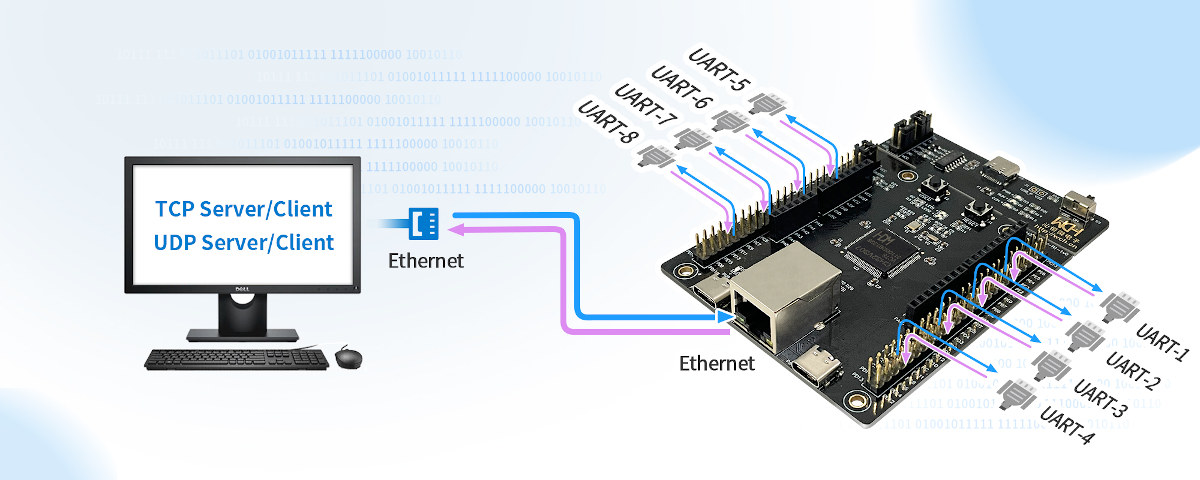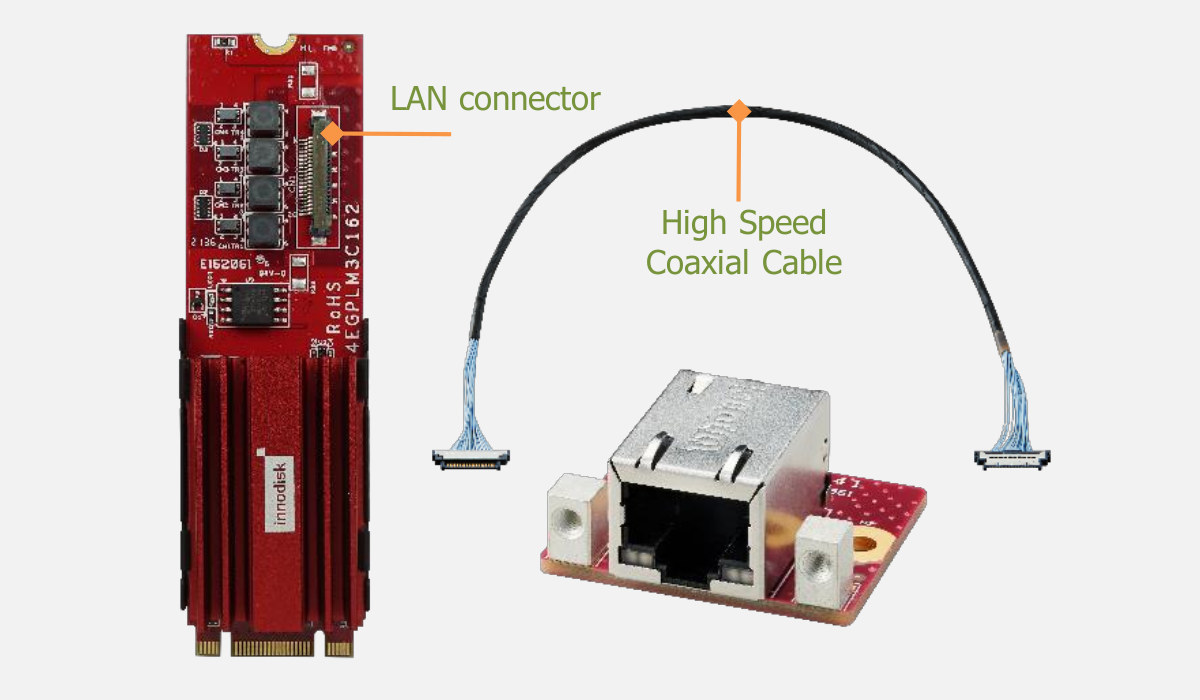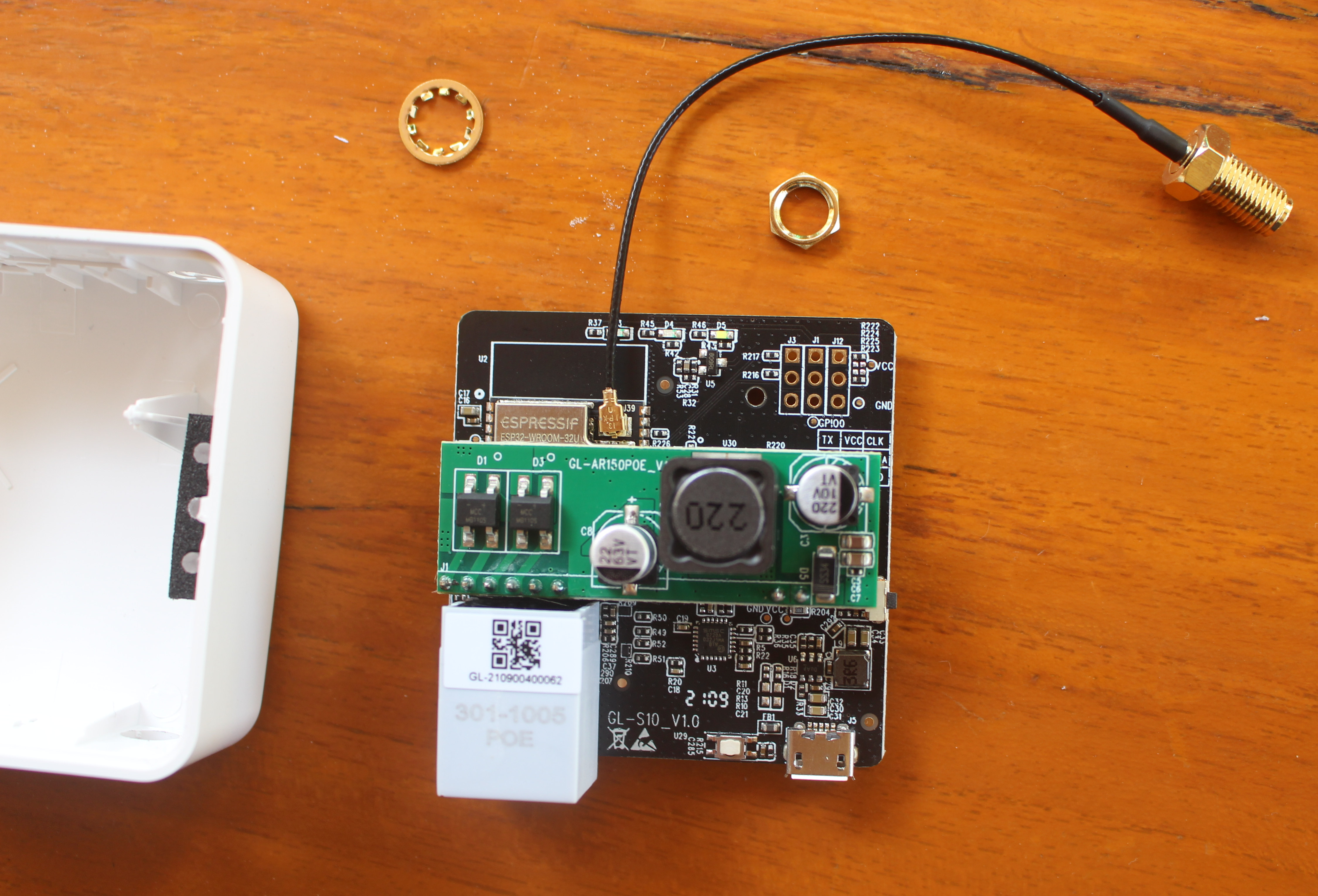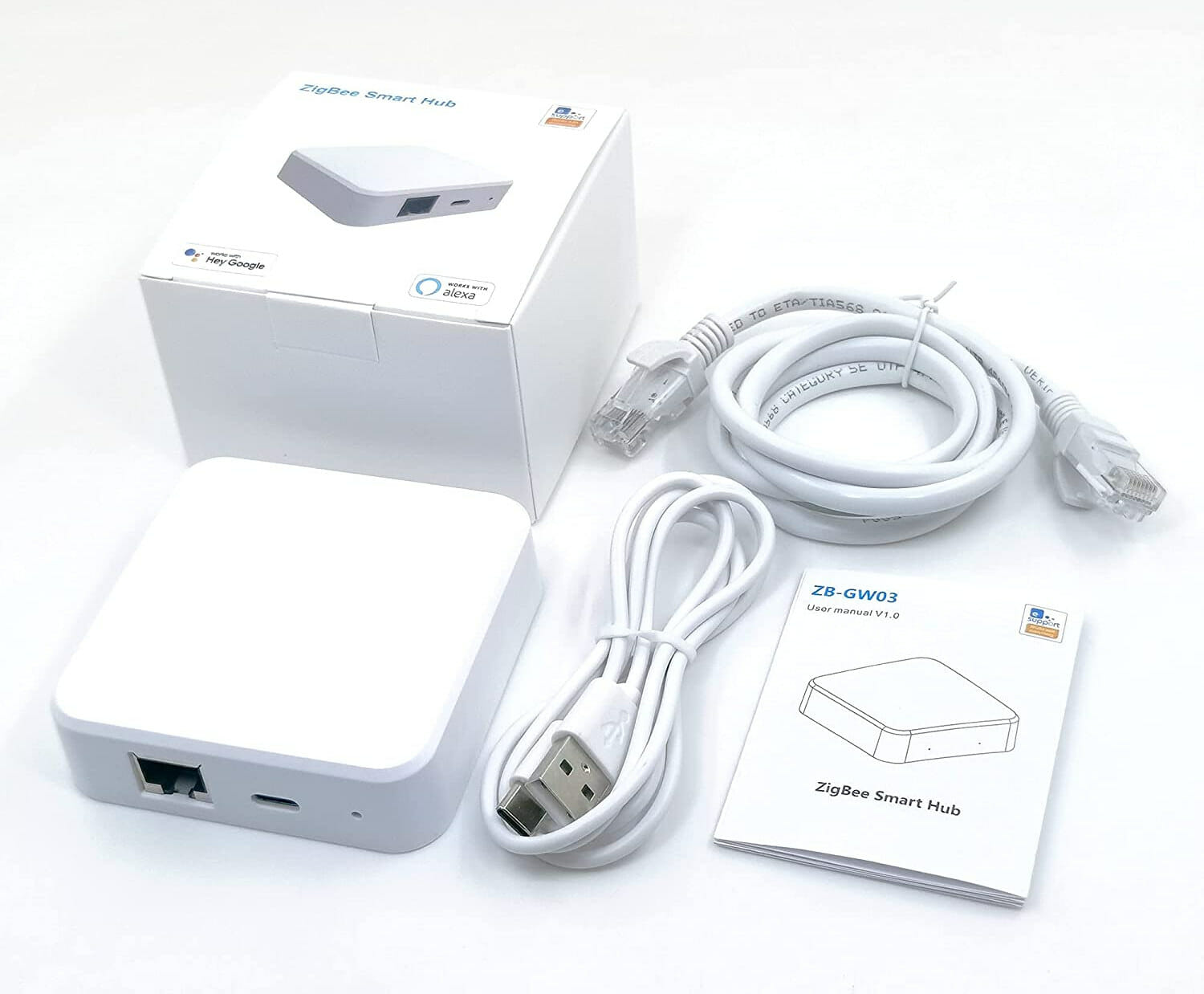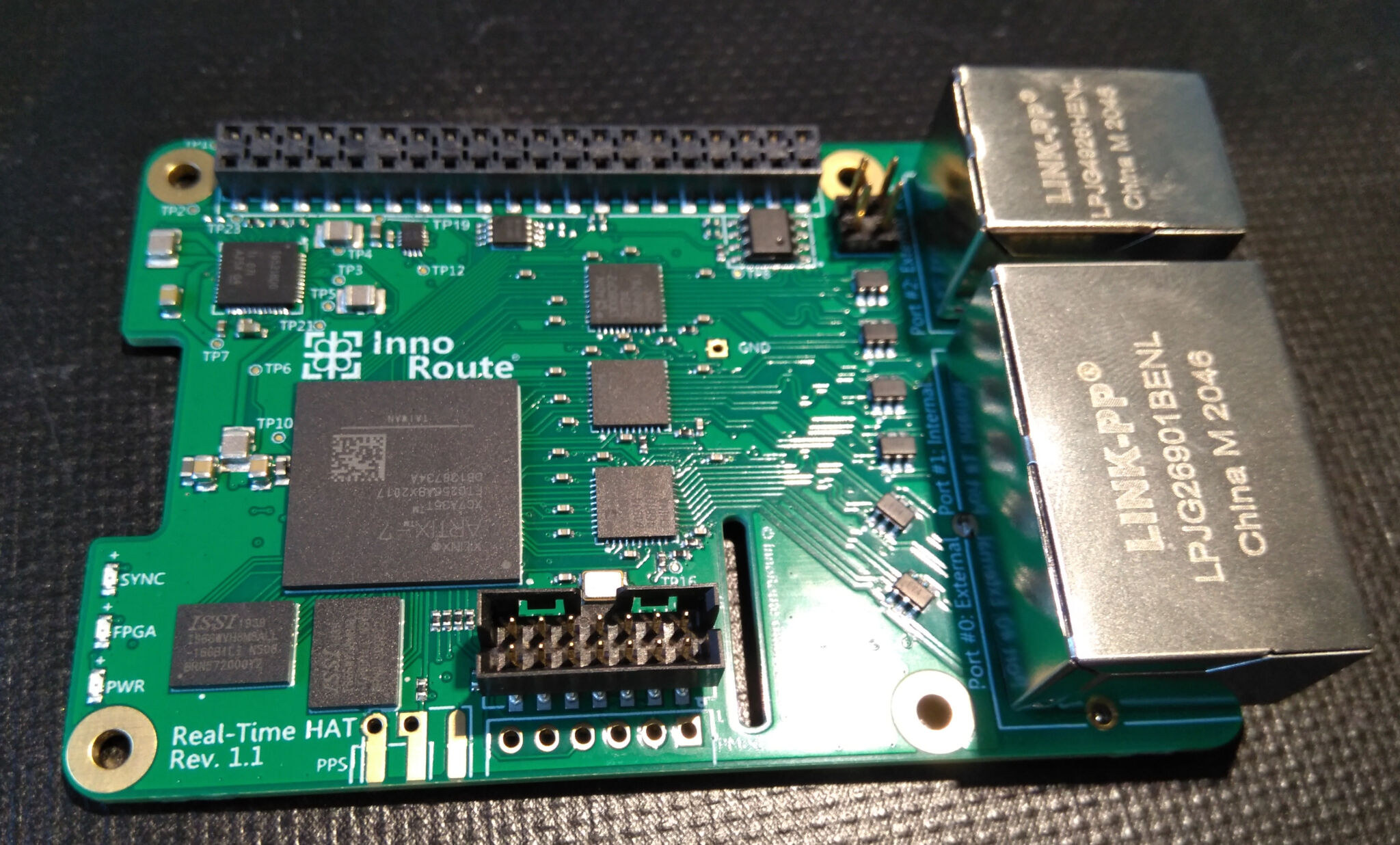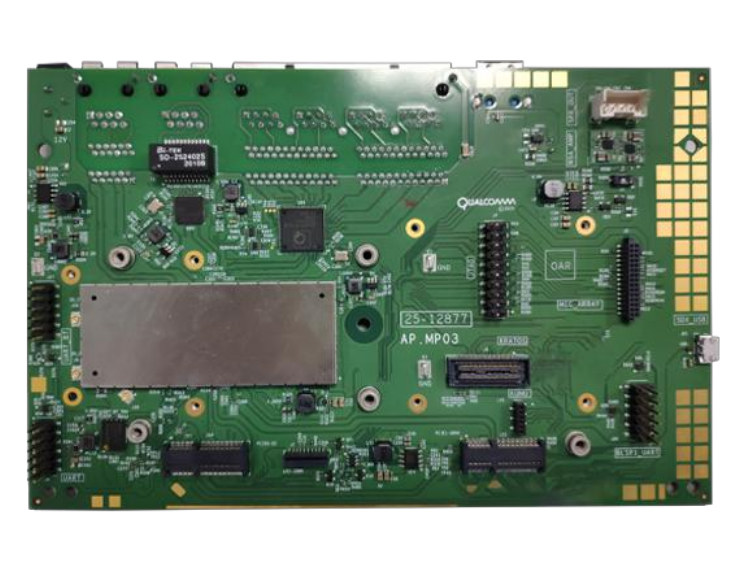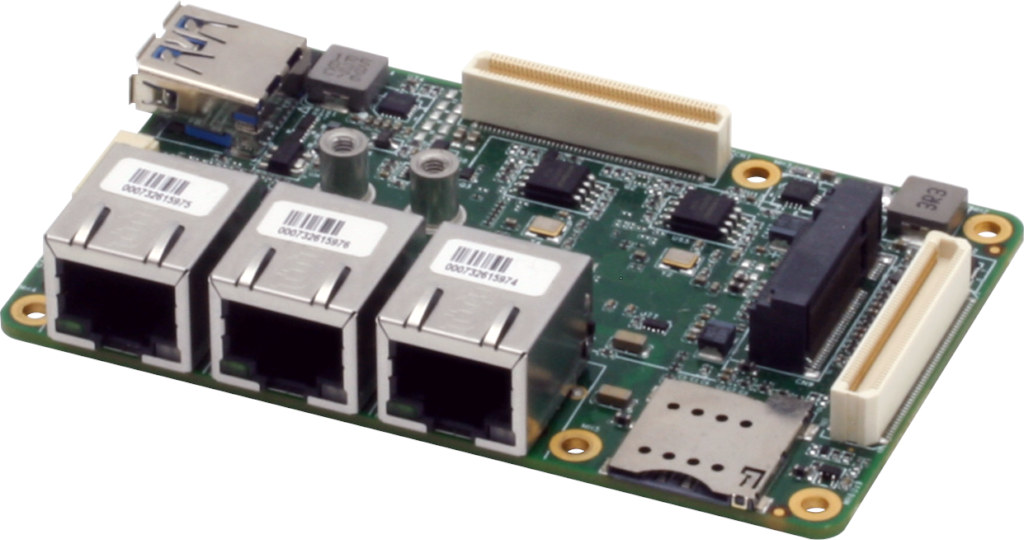CH32V307V-EVT-R1 is a development board based on WCH CH32V307 RISC-V microcontroller with an Ethernet port, an USB Type-C port, and eight UART interfaces accessible through headers. As we noted in our article about CH583 Bluetooth 5.3 RISC-V microcontroller, WCH (Jiangsu Qin Heng) has started to share resources like datasheets and code samples through Github. They’ve done the same again for CH32V307 with schematics (PDF only), a datasheet in English, and firmware either bare metal or based on RT-Thread OS to control the eight serial interfaces over Ethernet. Let’s check CH32V305 and CH32V307 MCU specifications first: MCU core – WCH designed RISC-V4F 32-bit RISC-V core up to 144MHz FPU – Single-cycle multiplication and hardware division, hardware float point unit (FPU) ; Memory – Up to 64KB SRAM Storage – Up to 256KB Flash Networking – Gigabit Ethernet MAC, 10 Mbps PHY USB – 1x USB 2.0 OTG full-speed interface, 1x USB […]
Add 10GbE to your system with an M.2 2280 module
It’s now possible to add 10GbE through an M.2 socket thanks to Innodisk EGPL-T101 M.2 2280 module based on Marvell AQtion Ethernet controller offering support for 10Gbps, 5Gbps, 2.5Gbps, 1000M, and 100M/10M LAN speeds. The solution is comprised of three parts with the M.2 module equipped with a heatsink to cool the Ethernet controller, a flexible high-speed cable, and a daughter board with an RJ45 connector and two threads for mounting to a chassis. Innodisk EGPL-T101 specifications: Ethernet controller – Marvell AQtion likely AQC113 “single-port 6speed, 10Gbps PCIe to Multi-Gig Ethernet controller with MAC and PHY with I-grade support” M.2 input interface – PCI Express 3.0 x 2 RJ45 connector for up to 10GbE Power Consumption – Up to 2.5W (3.3V, 762mA) Dimensions (W x L x H/mm) M.2 Board: 22 x 80 x 14.5 mm (M.2 2280 form factor) Daughter Board: 31.75 x 28 x 17.7 mm Temperature Range […]
Review of an ESP32-based BLE to MQTT gateway – Part 1: GL.inet GL-S10 unboxing and teardown
GL.inet introduced the GL-S10 BLE to MQTT IoT gateway last month with an ESP32 module offering WiFi and Bluetooth connectivity, as well as Ethernet and PoE support. I got offered a sample for review, and just received it together with the optional BLE beacon. So today, I’ll first have a look at the content, and check out the hardware with a teardown. GL.inet GL-S10 unboxing The package shows us the main features with Bluetooth LE 4.2, WiFi, PoE, and external antenna, with GL-S10 described as a BLE IOT GATEWAY connecting IoT devices to the Cloud. The gateway ships with a getting started guide, an antenna, a USB cable for power, as well as the beacon which we can see with a 3M stick tape. On one side, we have the RJ45 connector for Ethernet and a micro USB port for power, while the other side features a reset button, plus […]
ZB-GW03 ESP32-based Ethernet Zigbee gateway works with Tasmota firmware
ZB-GW03 is an Ethernet Zigbee Gateway compatible with eWelink mobile app and with a design similar to SONOFF ZBBridge gateway but replacing ESP8266 SoC by ESP32 SoC, and adding an Ethernet port. The ZB-GW03 gateway is apparently based on the same Silicon Labs EFR32MG21 Zigbee Arm Cortex-M33 chip and has been hacked to run Tasmota open-source software for people preferring more flexibility and/or integration with OpenHAB or Home Assistant open-source home automation frameworks via Zigbee2MQTT. ZB-GW03 gateway specifications: Main MCU – Espressif Systems ESP32 dual-core Tensilica TX6 processor @ 240 MHz with WiFi 4 and Bluetooth connectivity Zigbee MCU – Silicon Labs EFR32MG21 Arm Cortex-M33 MCU @ 80 MHz with Zigbee 3.0 connectivity Connectivity 10/100M Ethernet, WiFi, and Bluetooth via ESP32 Zigbee 3.0 via Silabs MG21 MCU with support for 128 nodes, up to 200+ meter range One 2.4 GHz Zigbee antenna One 2.4 GHz PCB antenna for WiFi Misc […]
Raspberry Pi 4 gets IEEE1588 Precision Time Protocol (PTP) with Real-Time HAT
InnoRoute Real-Time HAT adds IEEE1588 Precision Time Protocol (PTP) to Raspberry Pi 4/3 via a Xilinx Artix-7 FPGA and three Gigabit Ethernet ports. The Precision Time Protocol (PTP) is used to very accurately synchronize clocks throughout a computer network to enable measurement and control systems. It is often found in embedded microcontrollers or processors from Texas Instruments, STMicro, and more recently, in Intel Elkhart Lake & Tiger Lake H processors. It can notably be used for Time-Sensitive Networking (TSN) and Audio Video Bridging (AVB). InnoRoute Real-time HAT specifications & key features: FPGA- Xilinx Artik-7 FPGA Some RAM Networking Gigabit Ethernet port 0 with IEEE1588/TSN signaling Gigabit Ethernet port 1 with input from Raspberry Pi 4 Gigabit Ethernet port 2 with PoE, without TSN Host interface – 40-pin Raspberry Pi header mostly for SPI and I2C interfaces used for configuration. Misc – 3x LEDs, JTAG and PMod connectors, EEPROM (for Raspberry […]
Low-cost embedded router SBC offers 2.5 GbE, WiFi 6 through Qualcomm IPQ5018 SoC
Wallys Communication has been offering Qualcomm-based embedded router boards for several years, including the higher-end DR8072A with dual 2.5GbE and WiFi 6 connectivity, followed by a lower-cost WiFi 6 SBC based on IPQ6010 with Gigabit Ethernet ports. But if you’d like to benefit from the lower cost while keeping WiFi 6 and 2.5GbE, the company has now introduced a new model based on Qualcomm IPQ5018 dual-core Cortex-A53 SoC, also found in Xiaomi Mi AX6000 router, with DR5018 embedded router board. The blurry photo above reveals the board is also called AP.MP03, a name that looks like the typical name for Qualcomm reference designs. DR5018 specifications: SoC – Qualcomm Atheros IPQ5018 dual-core Arm Cortex-A53 processor @ 1.0 GHz System Memory – 512MB DDR3L Storage – 4GB or 8GB eMMC flash, 4MB Nor Flash, 128MB NAND flash Networking 4x Gigabit Ethernet Ports or 1x 2.5Gbps Ethernet port 1x Gigabit Ethernet Port On-board […]
UP Connect Plus adds 5G support, 3 GbE ports to UP Core Plus, UP Xtreme SBCs
AAEON UP Connect Plus is a carrier board with three Gigabit Ethernet (GbE) ports, and an M.2 slot plus a micro SIM card socket adding support for 5G cellular connectivity to the company’s Appolo Lake-based UP Core Plus and Whiskey Lake-powered UP Xtreme single board computers. UP Connect Plus specifications: Connectivity 3 Gigabit Ethernet RJ45 ports in two configurations: 3x Intel Ethernet Controller I211-AT 3x Intel Ethernet Controller I210-IT with wide temperature and TSN (Time-sensitive Networking) 5G cellular – M.2 3042/3052 colay socket with micro-SIM card port to support 4G/5G modules USB – 1x USB 3.0 Type-A port for UP Core Plus only PCIe – 1x 2 channel PCIe switch SBC connectors – 2x 100-pin high-speed docking connectors Power Supply – 12V/5V from the main board Power Consumption – Approximately 36 to 40 Watts with UP Core Plus + UP Connect Plus Dimensions – 90 mm x 56 mm Temperature […]
10BASE-T1L Ethernet chips enable up to 1.7 kilometer long Ethernet cables
The maximum length of Ethernet cables used to be 100 meters. While that may be more than enough for most applications, it does not cut it for industrial communication applications. So the 10BASE-T1L Ethernet physical layer standard (IEEE 802.3cg-2019) was approved by the IEEE on November 7, 2019 to allow for cables over one kilometer using a single twisted-pair cable. Analog Devices has launched two 10BASE-T1L Ethernet chips with ADIN1100 Ethernet PHY and ADIN1110 Ethernet MAC-PHY that allow for up to 1.7 kilometer long Ethernet cables. Let’s check out ADIN1100 specifications for reference: 10BASE-T1L IEEE Std 802.3cg-2019 compliant Cable Reach 1700 meters+ with 1.0 V pk-pk 1700 meters+ with 2.4 V pk-pk Auto-Negotiation capability Supports intrinsic safety applications MII, RMII & RGMII MAC interfaces MDIO Management Interface Unmanaged configuration using pin strapping including: Master/Slave selection Transmit amplitude PHY address 25 MHz crystal oscillator/25 MHz external clock input (50 MHz external […]


